Abstract
Neonatal tetanus is still an important public health problem in both urban and rural Bangladesh, with an estimated 41,000 cases occurring annually. This article analyses the coverage of tetanus toxoid (TT) immunizations among women of reproductive age in Zone 3 of Dhaka City in 1995. Although 85% of women with a child under 1 year of age had received two TT immunizations, only 11% of women of reproductive age had obtained the complete series of five TT immunizations and only 52% of women of reproductive age had received one or more TT immunizations. Access to TT immunization, as defined by having had at least one such immunization, was lower among women aged over 30 years and also among those aged under 20 years, especially those who were not yet married or who had not yet become pregnant. Characteristics associated with TT immunization status included the following: educational level of the woman, distance from the nearest immunization centre, and level of contact with family planning field workers. Additional characteristics that influenced women's TT immunization status included age, marital and working status, recency of migration from rural to urban area, and number of children. The relationships were complex and varied depending on the number of TT immunizations received (one or two) and on the type of analysis being carried out (bivariate or multivariate). The findings point to the need for a broad-based campaign to promote access to TT immunization as well as to promote the completion of all five TT doses in Bangladesh. Reducing missed opportunities for promotion of immunization as well as targeting home visitation of women in need of additional immunizations constitute further approaches to improving coverage. Although TT coverage rates were only marginally lower among women in slum households, such women were more likely than those in non-slum households to be pregnant and hence more likely to bear a baby at risk of neonatal tetanus. Furthermore, the environment of slum households, where deliveries normally take place, is more conducive to the development of neonatal tetanus among unprotected neonates; a strategy of focusing on slum households is therefore also needed.
Full text
PDF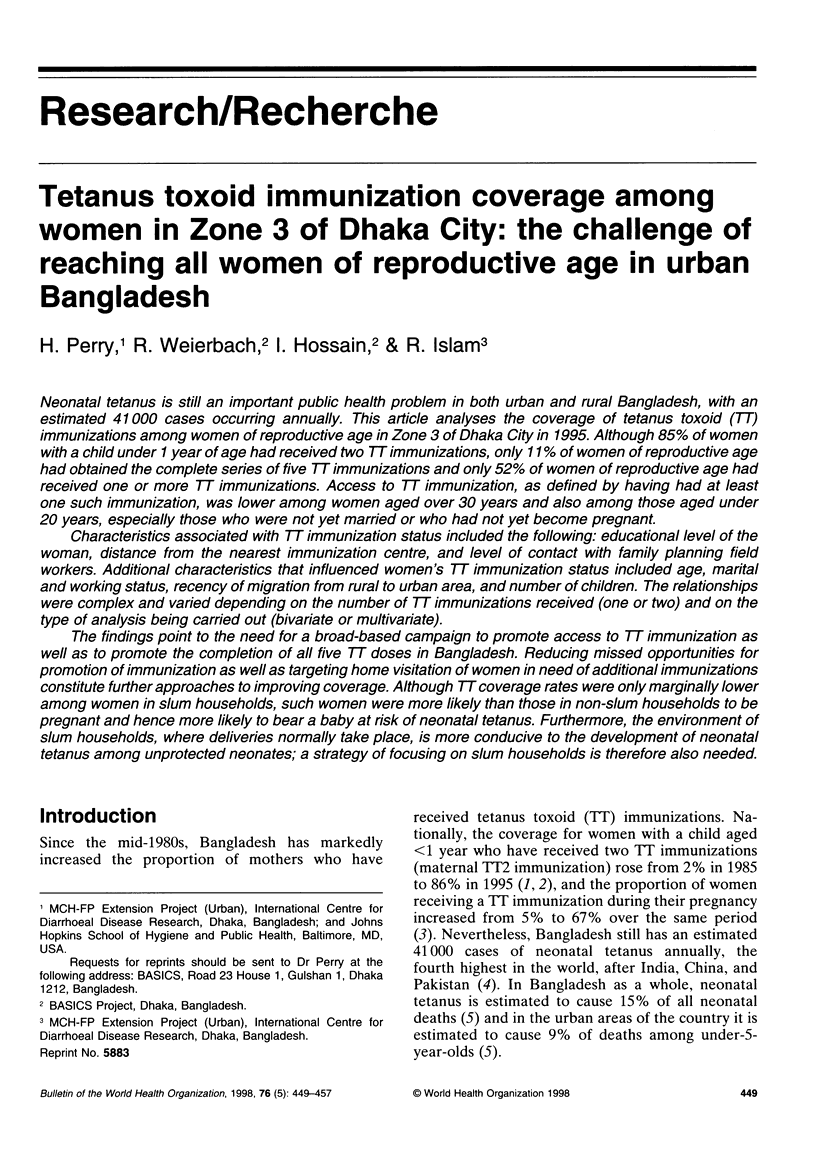


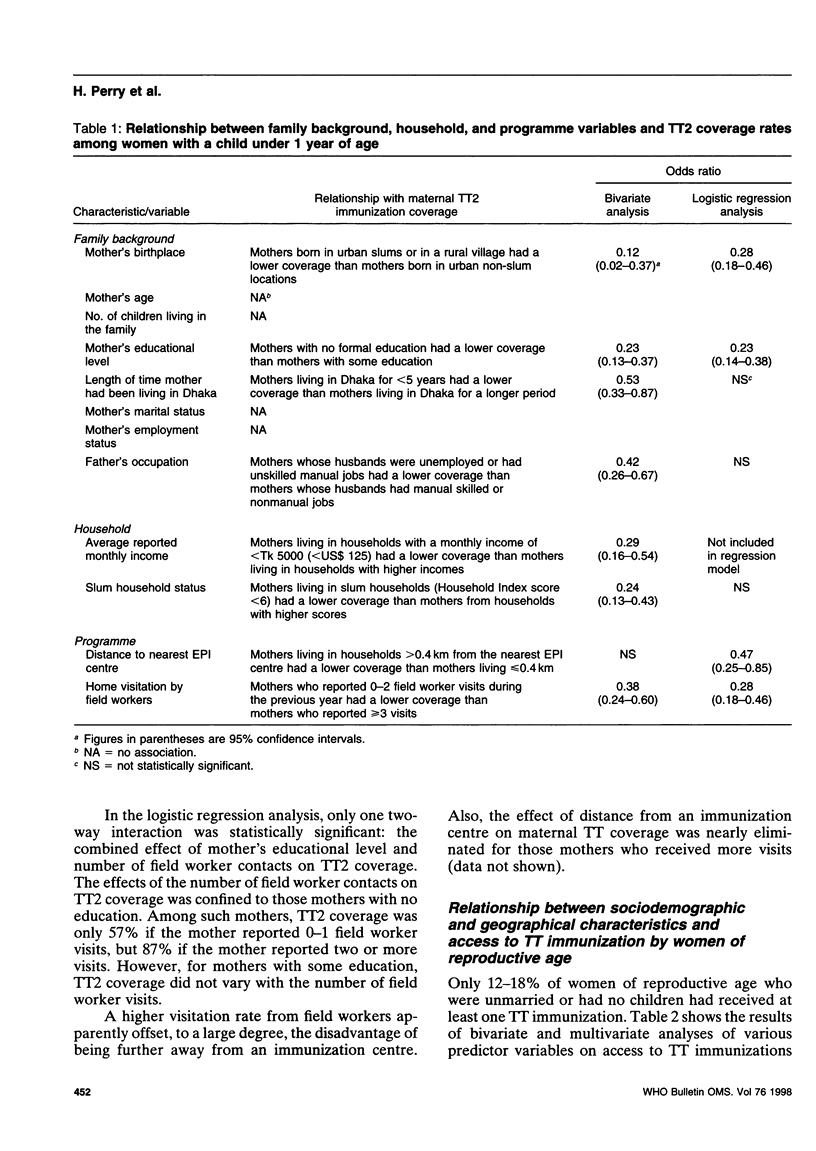

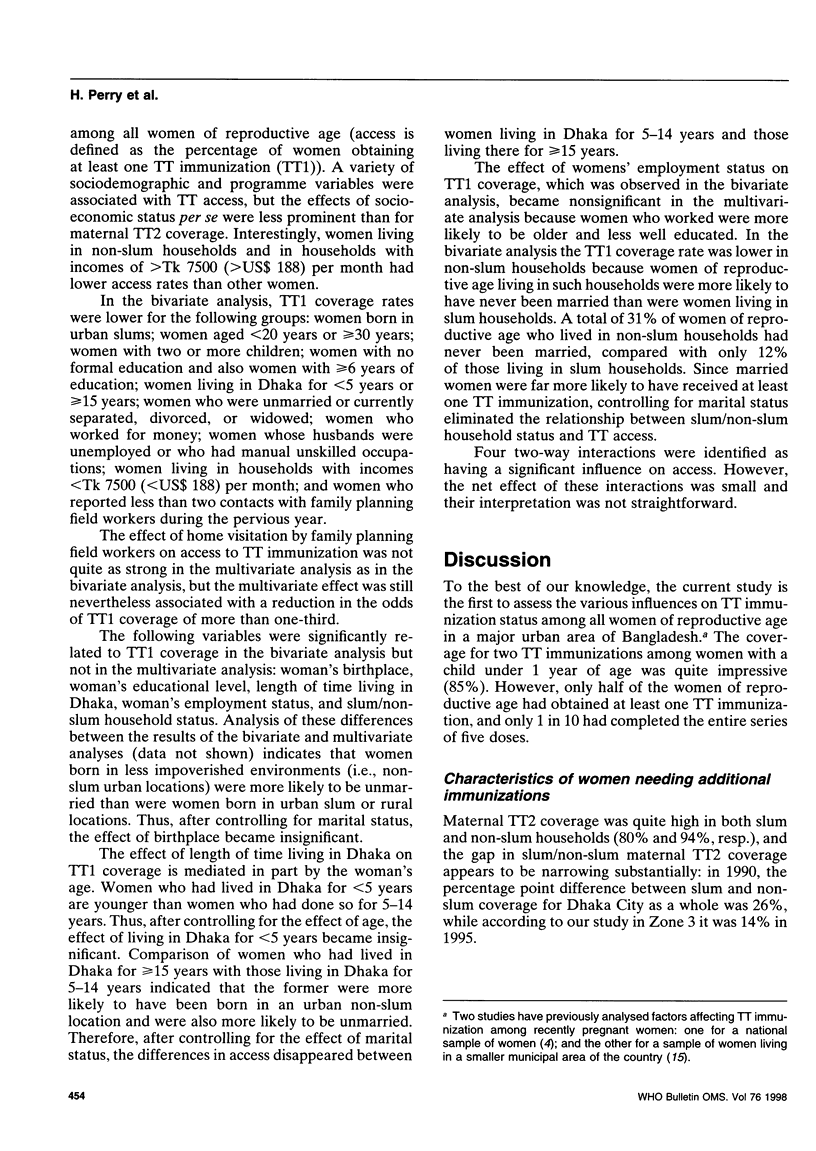
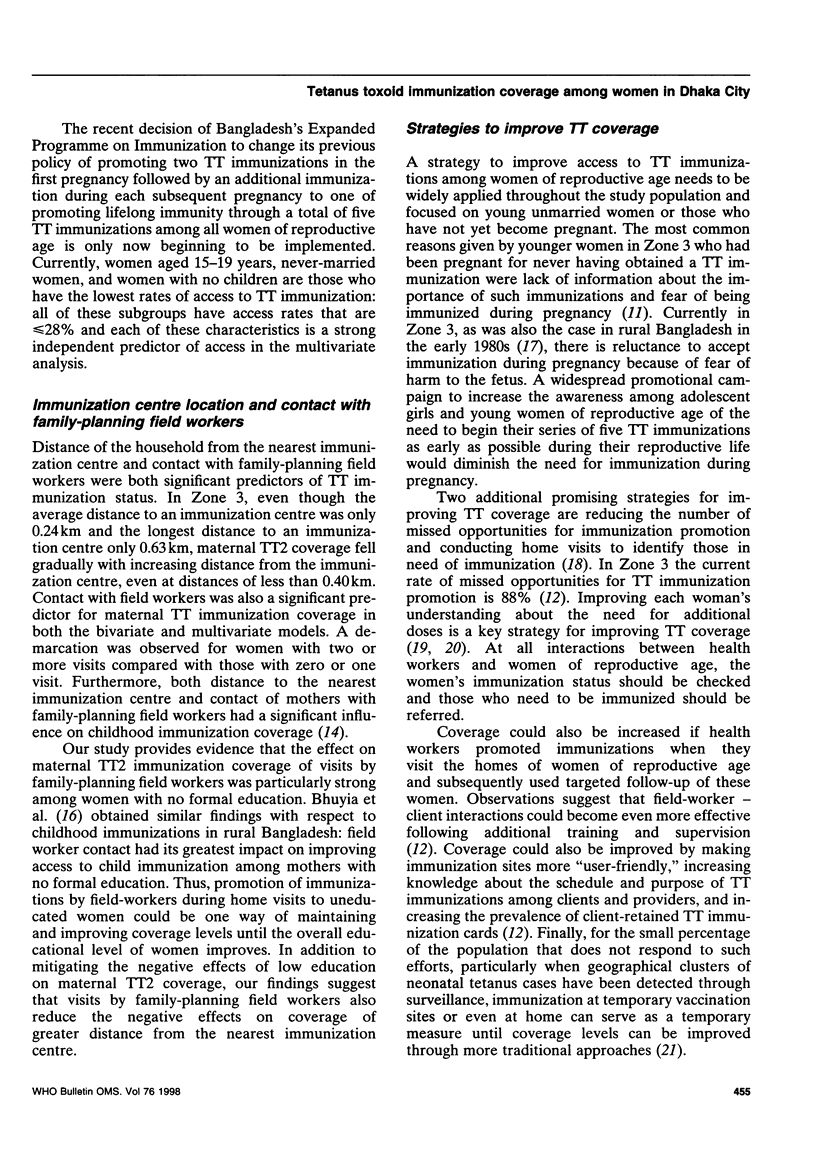

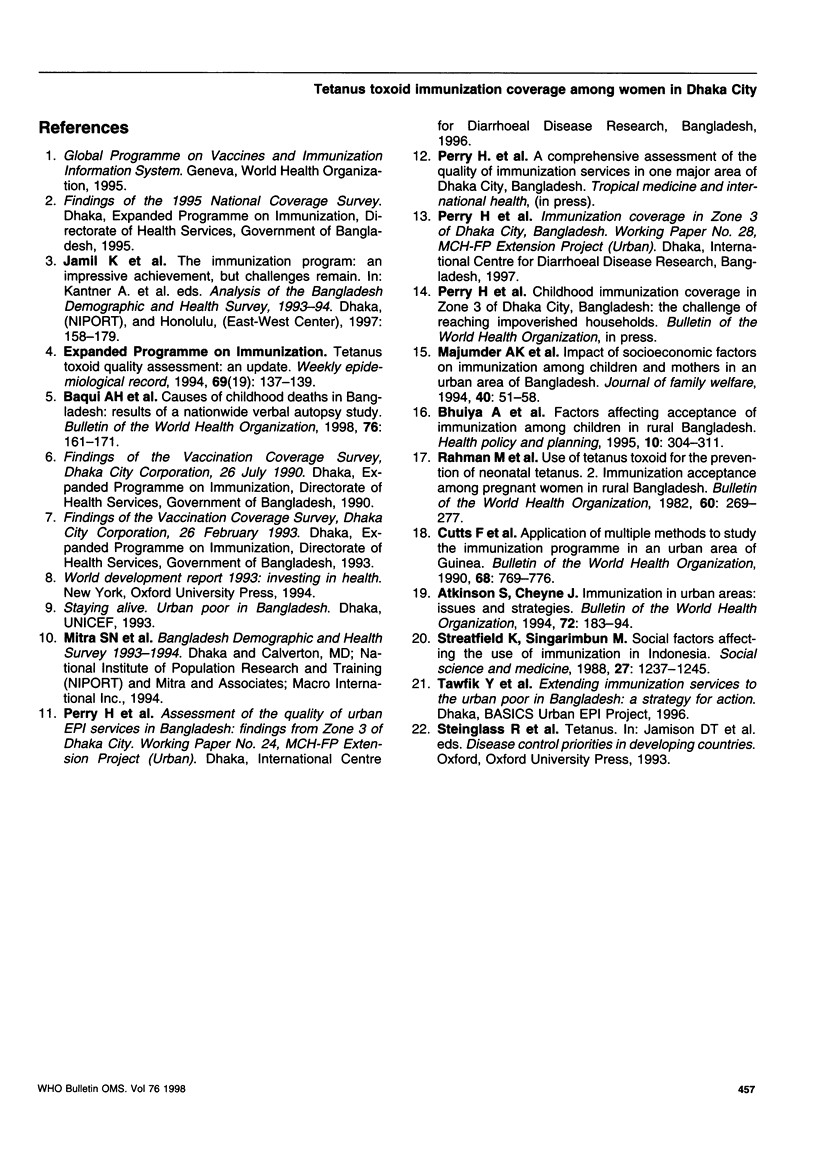
Selected References
These references are in PubMed. This may not be the complete list of references from this article.
- Atkinson S. J., Cheyne J. Immunization in urban areas: issues and strategies. Bull World Health Organ. 1994;72(2):183–194. [PMC free article] [PubMed] [Google Scholar]
- Baqui A. H., Black R. E., Arifeen S. E., Hill K., Mitra S. N., al Sabir A. Causes of childhood deaths in Bangladesh: results of a nationwide verbal autopsy study. Bull World Health Organ. 1998;76(2):161–171. [PMC free article] [PubMed] [Google Scholar]
- Cutts F. T., Glik D. C., Gordon A., Parker K., Diallo S., Haba F., Stone R. Application of multiple methods to study the immunization programme in an urban area of Guinea. Bull World Health Organ. 1990;68(6):769–776. [PMC free article] [PubMed] [Google Scholar]
- Rahman M., Chen L. C., Chakraborty J., Yunus M., Faruque A. S., Chowdhury A. I. Use of tetanus toxoid for the prevention of neonatal tetanus. 2. Immunization acceptance among pregnant women in rural Bangladesh. Bull World Health Organ. 1982;60(2):269–277. [PMC free article] [PubMed] [Google Scholar]
- Streatfield K., Singarimbun M. Social factors affecting use of immunization in Indonesia. Soc Sci Med. 1988;27(11):1237–1245. doi: 10.1016/0277-9536(88)90353-x. [DOI] [PubMed] [Google Scholar]


